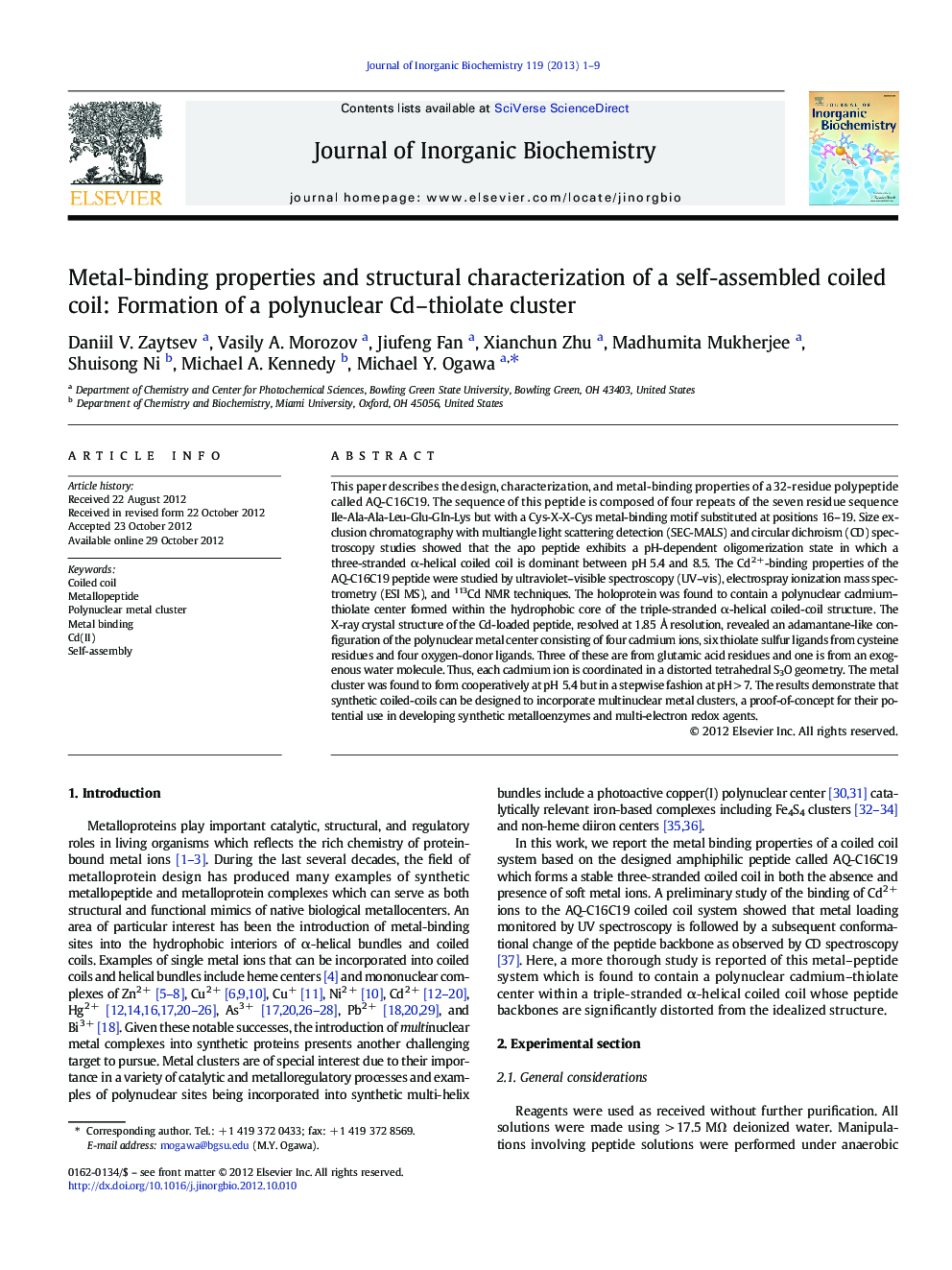| کد مقاله | کد نشریه | سال انتشار | مقاله انگلیسی | نسخه تمام متن |
|---|---|---|---|---|
| 1317683 | 1499468 | 2013 | 9 صفحه PDF | دانلود رایگان |

This paper describes the design, characterization, and metal-binding properties of a 32-residue polypeptide called AQ-C16C19. The sequence of this peptide is composed of four repeats of the seven residue sequence Ile-Ala-Ala-Leu-Glu-Gln-Lys but with a Cys-X-X-Cys metal-binding motif substituted at positions 16–19. Size exclusion chromatography with multiangle light scattering detection (SEC-MALS) and circular dichroism (CD) spectroscopy studies showed that the apo peptide exhibits a pH-dependent oligomerization state in which a three-stranded α-helical coiled coil is dominant between pH 5.4 and 8.5. The Cd2 +-binding properties of the AQ-C16C19 peptide were studied by ultraviolet–visible spectroscopy (UV–vis), electrospray ionization mass spectrometry (ESI MS), and 113Cd NMR techniques. The holoprotein was found to contain a polynuclear cadmium–thiolate center formed within the hydrophobic core of the triple-stranded α-helical coiled-coil structure. The X-ray crystal structure of the Cd-loaded peptide, resolved at 1.85 Å resolution, revealed an adamantane-like configuration of the polynuclear metal center consisting of four cadmium ions, six thiolate sulfur ligands from cysteine residues and four oxygen-donor ligands. Three of these are from glutamic acid residues and one is from an exogenous water molecule. Thus, each cadmium ion is coordinated in a distorted tetrahedral S3O geometry. The metal cluster was found to form cooperatively at pH 5.4 but in a stepwise fashion at pH > 7. The results demonstrate that synthetic coiled-coils can be designed to incorporate multinuclear metal clusters, a proof-of-concept for their potential use in developing synthetic metalloenzymes and multi-electron redox agents.
This paper describes the formation and X-ray crystal structure of a polynuclear cadmium–thiolate center formed within the hydrophobic core of a triple-stranded α-helical coiled coil.Figure optionsDownload as PowerPoint slideHighlights
► We report the Cd2+ binding properties of a designed coiled-coil peptide.
► We report the X-ray crystal structure of the Cd2+ loaded peptide.
► The tetranuclear metal center exists in an adamantane-like configuration.
► Each cadmium ion exists within a distorted tetrahedral S3O coordination geometry.
Journal: Journal of Inorganic Biochemistry - Volume 119, February 2013, Pages 1–9